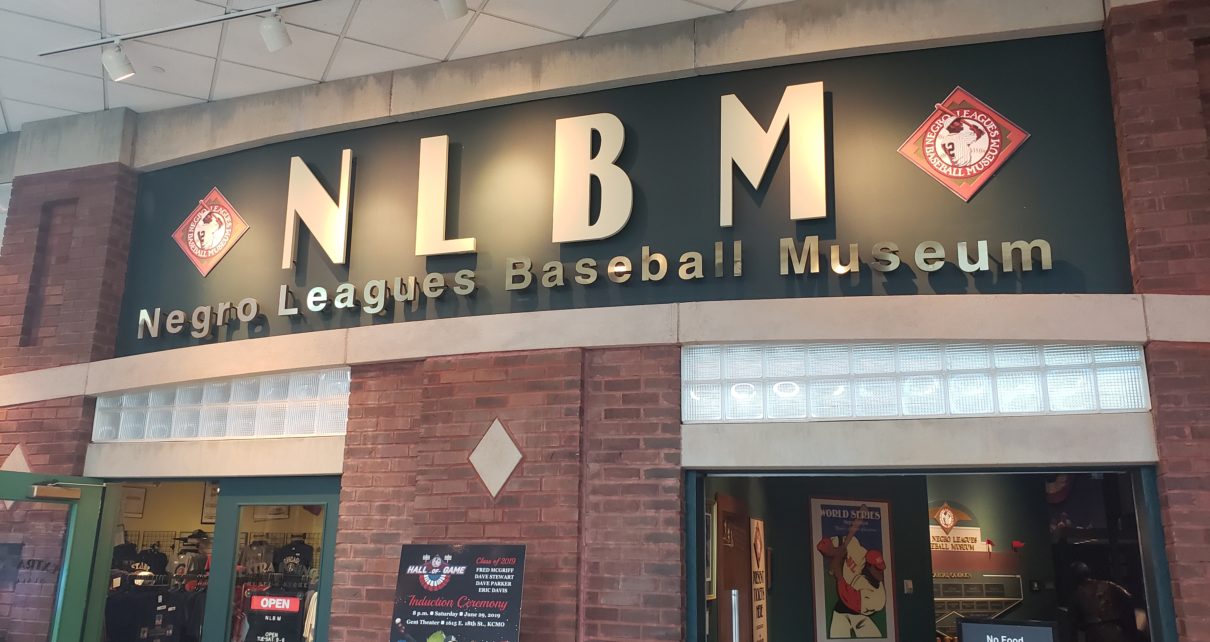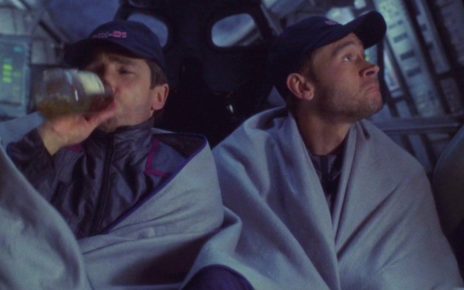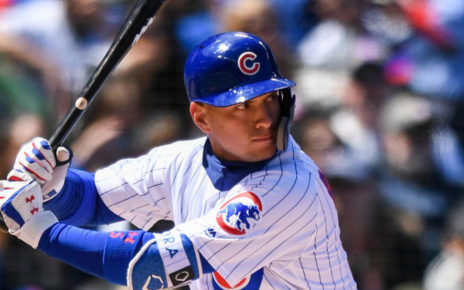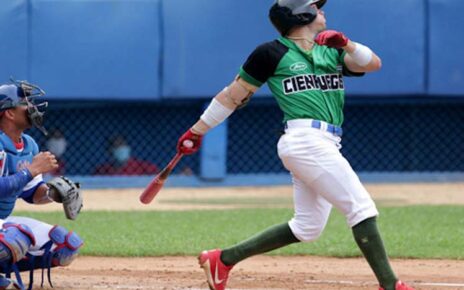Recently I had the chance to travel to the Missouri area and spend a day in baseball heaven. No, I’m not talking about Busch Stadium, though it is a gorgeous ballpark where everyone should take in a game at if they get the possibility. What I am talking about is the Negro Leagues Baseball Museum. It’s located in the 18th & Vine Jazz District of Kansas City and is in the same building as the American Jazz Museum. The district is beautiful, and the NLBM is a worthy centerpiece of said district.
The above reads a little more like an ad piece than an article, but trust me, the NLBM is worthy of any and all praise tossed its way. I have wanted to go see the museum for some years now, and after some careful planning from my girlfriend, I was finally able to take in the lasting memorial to a point of concerted interest in my baseball fandom, and writing, the Negro Leagues.
Visitors to the museum are first greeted by a map of the Negro major leagues and a statue of Buck O’Neil overseeing a field behind a fence. We’ll get to the field later, but right from the onset, the NLBM grabs your attention. The O’Neil statue is beautifully crafted and gives an idea of the love and dedication that has been put into telling this important part of baseball history. From there a quick stop for a movie detailing some of the more important figures and historical moments of the Negro Leagues is available for viewing. It’s about fifteen minutes long and gives just the right amount of information for both newcomers to the Negro Leagues and hardened fans alike.
The ring of history, for lack of a better term, makes up the bulk of the museum. At your own pace, you can walk around the museum reading about the detailed history of the Negro Leagues. There are artifacts and relics, recreations and fact sheets. It’s all very well done and manages to oscillate between wide breadths of important information and small anecdotal stories or quotes to emphasize the importance of what you are experiencing. It could be overwhelming, but because of the way the ring is set up it never feels like too much is on your plate.
I found myself easily drawn to the sections of the museum that dealt with Negro League players in other leagues. Too often the years that Negro League players spent in Cuba, Mexico, the Dominican Republic, etc. are treated as afterthoughts. If you read me regularly you know that I am a huge proponent of the global game of baseball and not just the Major League Baseball brand. Some of the best baseball in the world was played in Latin America in the early 1900s and seeing it get recognition from the NLBM in various spots around the museum brought a smile to my face.
Lester Rodney is not a name I have ever written before and if not for the NLBM I may never have known about him. Writing for the Daily Worker Rodney was a champion of integration. He made it his job to publish numerous articles taking MLB to task for their refusal to allow Negro League players the chance to compete in their league. Through his writing, he personally called out Kennesaw Mountain Landis for his overt racism and obstruction of the integration process. Yet, Rodney is a figure whose name has largely been lost to history and who I have never come across in any books, articles, etc. Thanks to the NLBM I know about Rodney and now want to know even more about someone who hits close to home for me. That’s part of the beauty of the NLBM, there’s plenty to discover, no matter who you are.
The ring of history begins to wind down when integration starts to take place. There is more in the final sections of the ring about minority players in MLB than the Negro Leagues themselves, but the NLBM doesn’t shy away the end days of the Negro Leagues. That integration destroyed a very successful African-American business is displayed, just as the efforts of professional female ballplayers like Toni Stone and Mamie Johnson are highlighted. The controversial aspects of the Negro Leagues, like the Indianapolis Clowns and their antics, aren’t ignored.
Next to last in the museum is a trip through a section of lockers doubling as a bust and plaque area. There are around twenty to thirty players represented here, and each is worthy of your time and attention. From the jerseys to the notes on their careers, this section is full of the attention to detail and remembrance of the past that makes the NLBM special. Had the museum ended here it would have been great as is, but it’s not quite through yet.
Last on the tour is the Field of Legends or that field behind the fence that I mentioned earlier. It consists of a life-size bronze statue at every position on the baseball diamond, including a batter, umpire, and the aforementioned O’Neil behind the fence managing the action. I took plenty of time walking around this section and honestly would have stayed even longer if I didn’t have an actual baseball game to get to at some point. Oscar Charleston, Leon Day, Josh Gibson, and Satchel Paige are a few of the statues that make up the Field of Legends. Being in their presence had an effect on me, sort of an awe-inspiring moment where I was caught up in the incredible nature of the display and the fleeting nature of a ballplayer’s existence.
Seriously, there’s not much else I can say, go and see the Negro Leagues Baseball Museum. If you live in the Kansas City area and haven’t seen it yet, I question your sanity. If you are a baseball fan with the means to see it, you owe it to yourself to see this monument to the great history of the Negro Leagues. I can’t wait until I am able to return, to stand once again on the Field of Legends and enjoy an experience unlike any other.
Lead photo courtesy of Bill Thompson – Negro Leagues Baseball Museum




